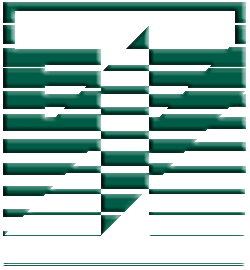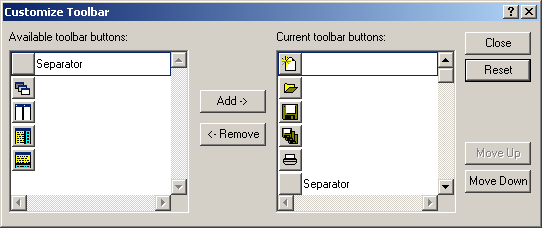
7301 Burnet Rd., #102-525
Austin, TX 78757
VX: (512) 302-0766
FX: (512) 302-1752
EMAIL: info@telescript.com
TeleScript AVtm
Hints & Tips
On this page, I want to highlight some of the more arcane features of TeleScript AV in an informal, hands-on manner. Hopefully, as you become more familiar with day to day operation, you'll want to try some of these nifty things. Also, as I get interesting feedback and helpful tips from users. I'll try to post some of these items on here, giving, of course, proper credit to the submitter and a link to their own home pages! So... send me your own notes, hints and tips. --Jim Stringer
Topics
Some planned content... if the link is not active, then the topic's still in the "planning stages".
- Installing TeleScript AV
- Toolbar customization
- The Version Number - what does it mean?
- Multiple Displays
- Log files
- Runlist undocumented tips
- Setting Options
- Customizing Layouts
- Host/Client
- Drag and Drop
- Users and security
- Windows issues and workarounds
- The Open File dialog
- Don't forget the Command Prompt
- Timer
- Dialog controllers - why have 'em?
- Control arbitration
Installaing TeleScript AVtm
2. Double click the installer ".exe" icon and follow the instructions provided by the installation wizard.
3. When installation has completed, run TeleScript AV by double clicking the desktop icon.
4. TeleScript AV requires the most recent version of the DirectX runtime. You can download this at www.telescriptservice.com. (Note: this site is operated by Telescript, Inc. for the convenience of our customers. DirectX runtime updates may also be downloaded directly from Microsoft.)
Toolbar Customization

The toolbar can be a handy time saver, but it can also be a clutter.
And with too many buttons, it's hard to find the ones you use the most.
Fortunately, the TeleScript AV toolbar is editable, and beginning with
with the version 7.2.1.089, the customization is saved and restored when the program
is started.
There are three ways to customize the toolbar:
You can move a single button to a different position. To do this:
- Move the mouse cursor over the button you want to move;
- Press and hold the left mouse button;
- Press and hold the <Shift> key.
- Drag the button to the new location on the toolbar and release the mouse button.
You can start the Customize Toolbar dialog by double-clicking an empty space on the toolbar.
You can start the Customize Toolbar dialog from the Tools/Customize... menu item.
Either of these last two methods will start the "Customize Toolbar" dialog, which is a Windows "common dialog", this is, it's available to ALL windows programs and will behave similarly in all applications which implement this type of toolbar.
The Customize Toolbar dialog displays buttons in two columns:
Available toolbar buttons on the left;
Current toolbar buttons on the right.
You can move a button from the Available column to the Current column as follows:
- Click a button in the Current column to indicate where you want the new button to appear;
- Click a button in the Available column to select the button you want to insert;
- Click "Add->". The selected Available button will be added the the toolbar immediately before the selected Current button
Also, you can move a Current button up or down (right or left in the actual toolbar) by selecting a button in the Current column, then clicking "Move Up" or "Move Down".
If you don't like what you've done, click "Reset" and the buttons will return to their positions when you started the Customize Toolbar dialog.
When you're done customizing, click "Close".
There's no need to "save" the customization. When you exit from TeleScript AV, your toolbar setup will be saved and restored the next time you start the program.
The Version Number - what does it mean?
Often when you require help with TeleScript AV, our technical support
staff will ask for the "Version Number". You can find the version number in the About Box
(view by selecting Help/About from the main menu.)
Here's the anatomy of the Version Number (using 7.2.1.091 as an example):
7 = the Telescript software product number. TeleScript AV is 7, TeleScript Pro is 6. If you're
curious about such things, product #1 was our C-64 program released in 1983.
.2 = the "major" version. We only change this number when a new release is radically different
from earlier versions. A major version change might occur, if, for example, we changed the
file format of scripts so that earlier version could not read the new format. We've only changed
the major version of TeleScript AV once in it's lifetime.
.1 = the "minor" version number. We only change the minor version when features are added
that make newer versions incompatible with older versions. It's not much different than the major
version number in this regard. We haven't changed the minor version number for a considerable time.
.091 = the build. This changes every time we recompile the TeleScript AV source code. When
we make revisions to TeleScrip AV (or any other TeleScript software product), it generally requires
alot of writing. When the source files reach a point that they are ready to test, we "compile" the code
and begin the debugging process. If errors are found, we fix them and recompile (or build.) The build
number is incremented with each compilation cycle, though we may not increment the build number for
very minor fixes as we're in the debugging cycle.
Using Multiple Displays
By using multiple displays, you can maintain one monitor for control operations, while simultaneously prompting talent full screen on the second monitor. The system is easy to set up and easy to operate.
Log Files
It's possible that the extensive logging capability of TeleScript AV
(referred to here as TAV) is one of it's most distinguishing features, not only for Telescript
Technical Support
but also for the TeleScript AV user, as the log file actually is a chronicle of program
use. You can review what files were loaded, when prompting occurred, how long sessions lasted
and much more.
Admittedly, logfiles are not light reading. Depending on the depth of the logging specified
in your Preferences, a logfile for a typical TAV session may be thousands of lines long. This is a brief
anatomy of the log file... some things you might find useful.
At the very beginning of the log file, you'll find the time at which TAV was started. For example,
this line:
TeleScript AV Operation Log Created MAR 27, 2010 - 15:41:38:562
...indicates that a log file for TeleScript AV, was created on March 27, 2010. The time is military
time,so
this file was created at 3:41pm... or 38.526 seconds after the minute. The logs are VERY accurate in
their time stamps. This is by necessity -- often times, our technical support staff much determine how
programs interact and precision is required to the thousanth of a second.
Next is a section that records some information about the computer, the operating system
and the program version:
MAR 27, 2010 - 15:44:04:453 System Info
This line is just another time stamp and the System Info heading
TeleScriptAV(tm) Ver: 7.2.1.092-PW-R
Here we have the program version number. In this case
This is TeleScript AV, Ver7.2.1.092, it's PassWord enabled and this is a Release
version.
USER: COMP2000\prompterguy, has administrative rights
This line logs the name of the user who initiated this session, and notes whether this user
was operating with administrative rights.
Windows Version: 5.1, Build: 2600, Service Pack 3 - 3.0, Suite: 0100, Product Type: 1
Obviously, this line records information about the version of the Windows Operating System.
The next lines record the version of support DLL's which are used with the program.
MSFT: 5.41.15.1507
Comctl32: 5.82.2900
Spell Check: SSCE-5.14.10-U03
And finally, you see who to blame for all this!
Jim Stringer, Chris Stringer, Telescript West, Inc. - Austin, TX
There's alot more information to be gleaned from the log files... for example, you can
determine what runlist (or individual script) was loaded and at what time or what comm port was opened
for the hand controller and the properties of the comm port.
The last two lines of a complete log file are the exit trace:
MAR 27, 2010 - 15:44:23:656 (TeleScriptAV::WinMain-575) Normal exit from program
MAR 27, 2010 - 15:44:23:687 (TavMessageLog::TavMessageLogKill-230) Closing logfile
This logfile lines show a normal exit from the program and we can see by comparing the
starting time and ending time, that this session lasted only about 3 minutes. Don't you wish they
could all be so easy!